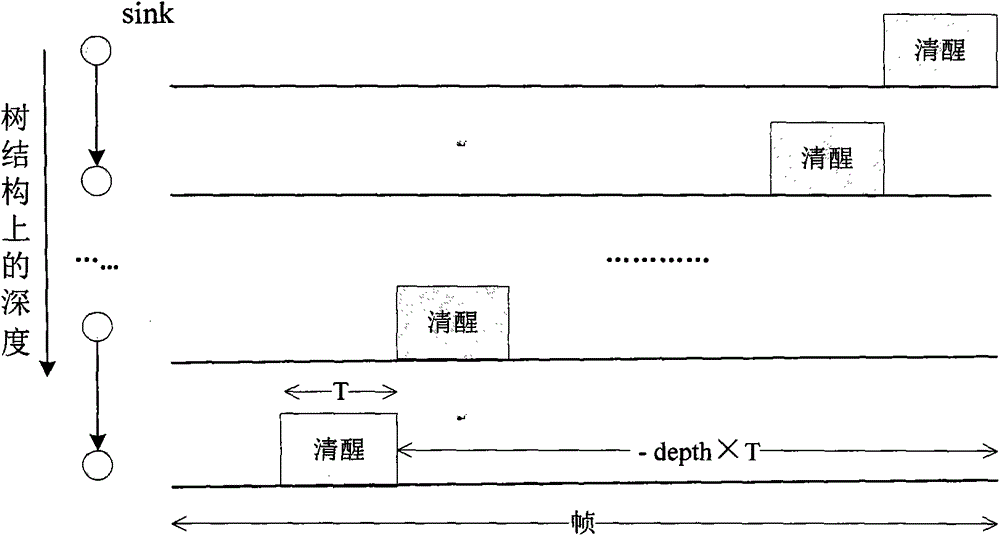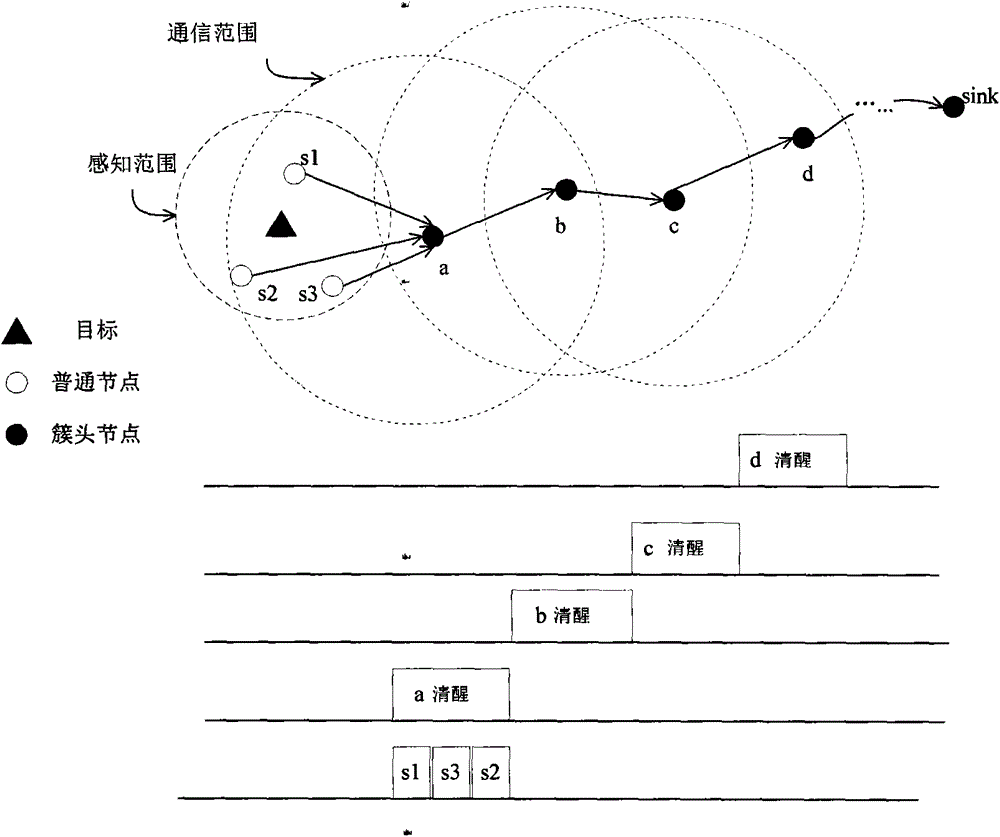Wireless sensor network distributed clustering and sleep scheduling method specific to target detection
A wireless sensor and target detection technology, applied in network topology, wireless communication, advanced technology, etc., can solve the problems of low transmission delay, large transmission delay of data reporting, and low energy consumption.
- Summary
- Abstract
- Description
- Claims
- Application Information
AI Technical Summary
Problems solved by technology
Method used
Image
Examples
Embodiment Construction
[0027] The present invention will be further described below in conjunction with the accompanying drawings and embodiments.
[0028] in the attached figure 2 Among them, nodes s1, s2, and s3 perceive the target event, and send data to their cluster head node a through CSMA. If other nodes also perceive the target time, and if three nodes have reported data, they will discard their own data packets. Node a performs data fusion after receiving the data, and then transmits the fusion data to node b during the working hours of node b, and so on. Finally, the data reaches the sink node through the tree structure. It can be seen that the sleep scheduling does not bring additional delay overhead to data transmission.
PUM
 Login to View More
Login to View More Abstract
Description
Claims
Application Information
 Login to View More
Login to View More - R&D
- Intellectual Property
- Life Sciences
- Materials
- Tech Scout
- Unparalleled Data Quality
- Higher Quality Content
- 60% Fewer Hallucinations
Browse by: Latest US Patents, China's latest patents, Technical Efficacy Thesaurus, Application Domain, Technology Topic, Popular Technical Reports.
© 2025 PatSnap. All rights reserved.Legal|Privacy policy|Modern Slavery Act Transparency Statement|Sitemap|About US| Contact US: help@patsnap.com


